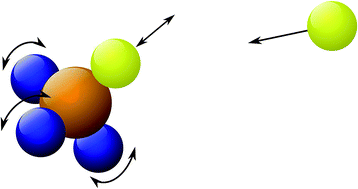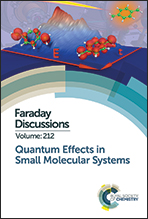Natural reaction channels in H + CHD3 → H2 + CD3
Abstract
Natural reaction channels are defined by the singular value decomposition of the S-matrix and can be interpreted as pathways through the transition state of the reaction. Here, the reaction probabilities and asymptotic state distributions associated with the natural reaction channels of the H + CHD3 → H2 + CD3 reactions are presented. The analysis is based on accurate quantum dynamics data obtained by full-dimensional (multi-layer) multi-configurational time-dependent Hartree (MCTDH) calculations using the quantum transition state framework and a high-level ab initio potential energy surface. The reaction starting from several different initial ro-vibrational states is investigated. The results provide interesting insights into symmetry-related differences between the mode-selective chemistry of CH4 and CHD3. The presence of localized vibrational modes in CHD3 is found to limit the loss of memory effect seen in the H + CH4 → H2 + CH3 reaction and to give rise to spectator behavior of the selected modes. Furthermore, the recently found reactivity borrowing effect, which results from a Fermi resonance-type state mixing of the triple umbrella excited and single C–H-stretch excited states of CHD3, is investigated. Here, the natural reaction channel analysis provides detailed information on the resonant energy transfer in the entrance channel of the reaction and the correlation between the asymptotic states of the reactants and the vibrational states of the activated complex.

- This article is part of the themed collection: Quantum effects in small molecular systems


 Please wait while we load your content...
Please wait while we load your content...